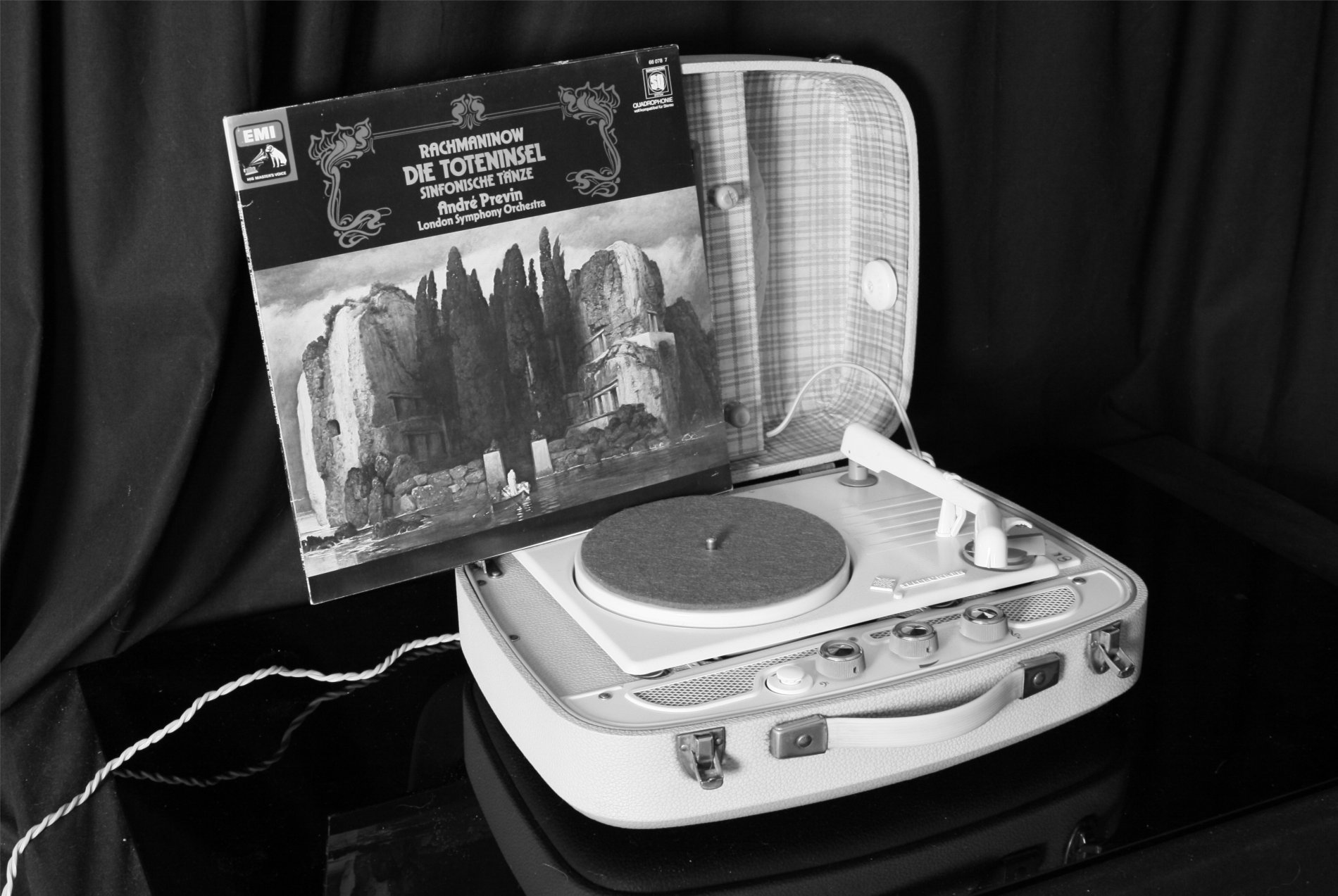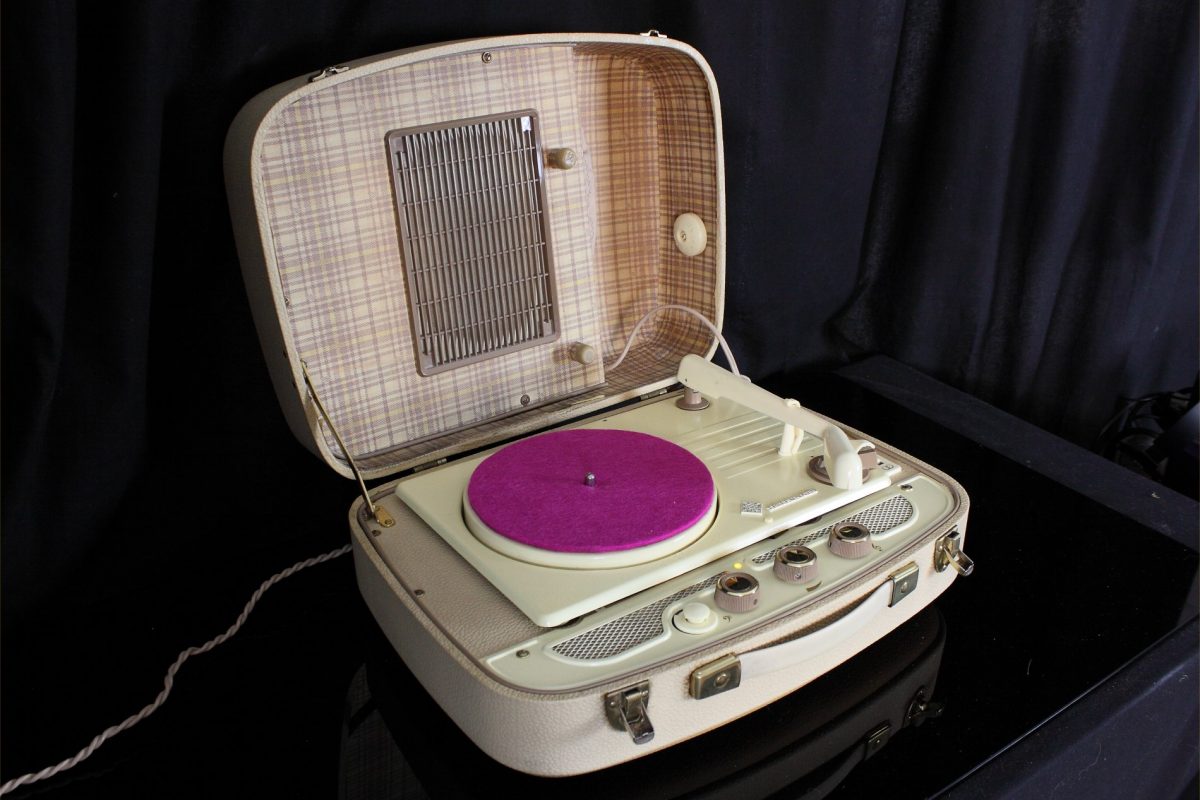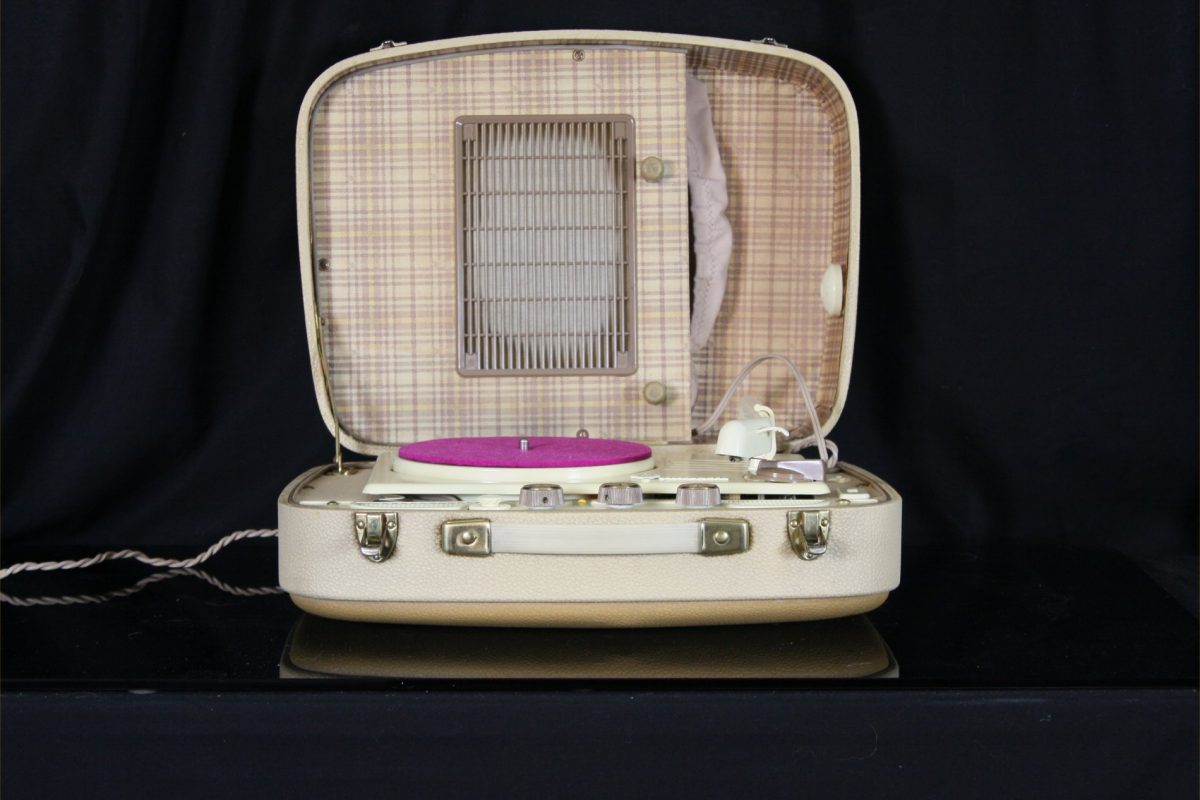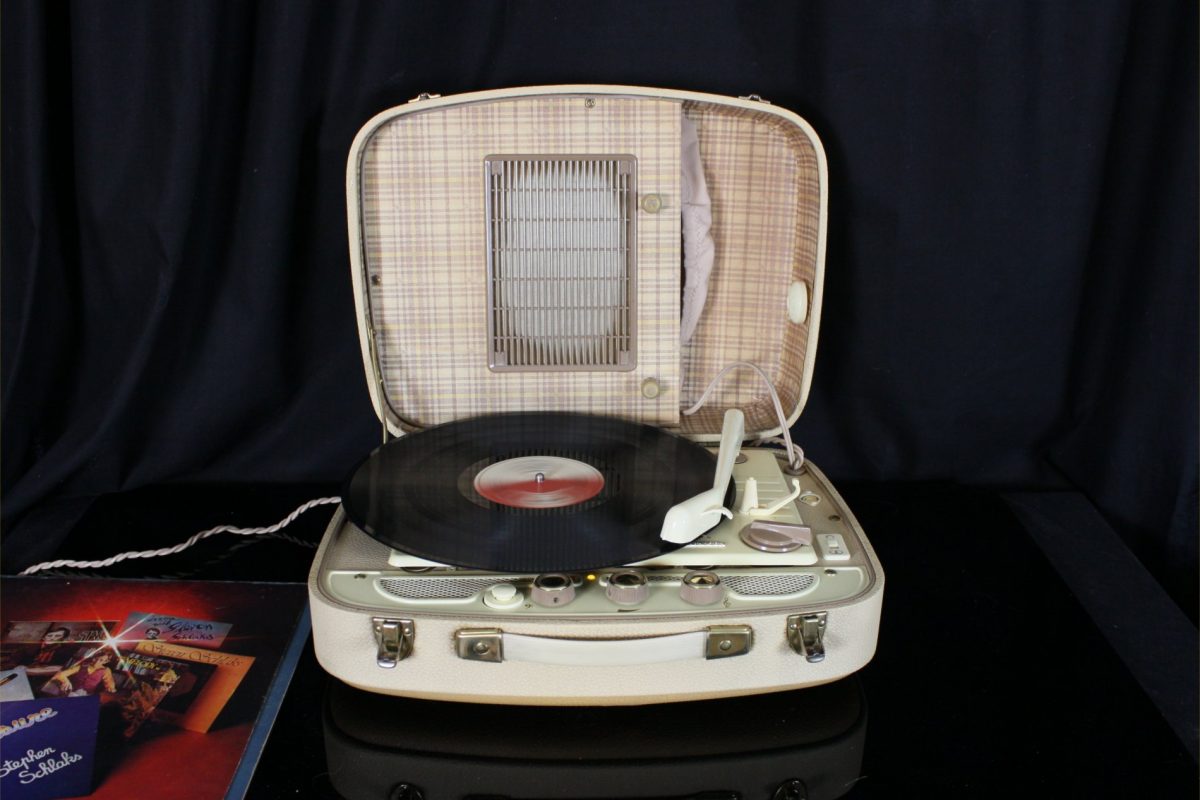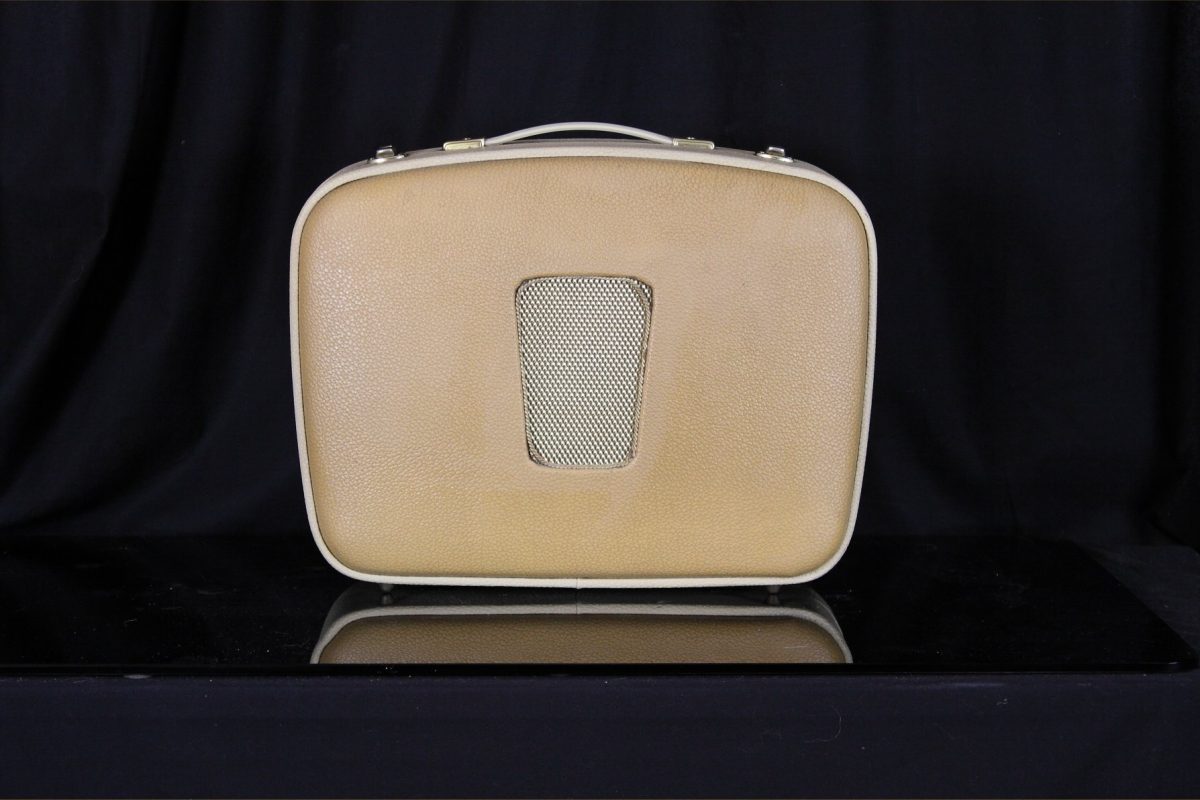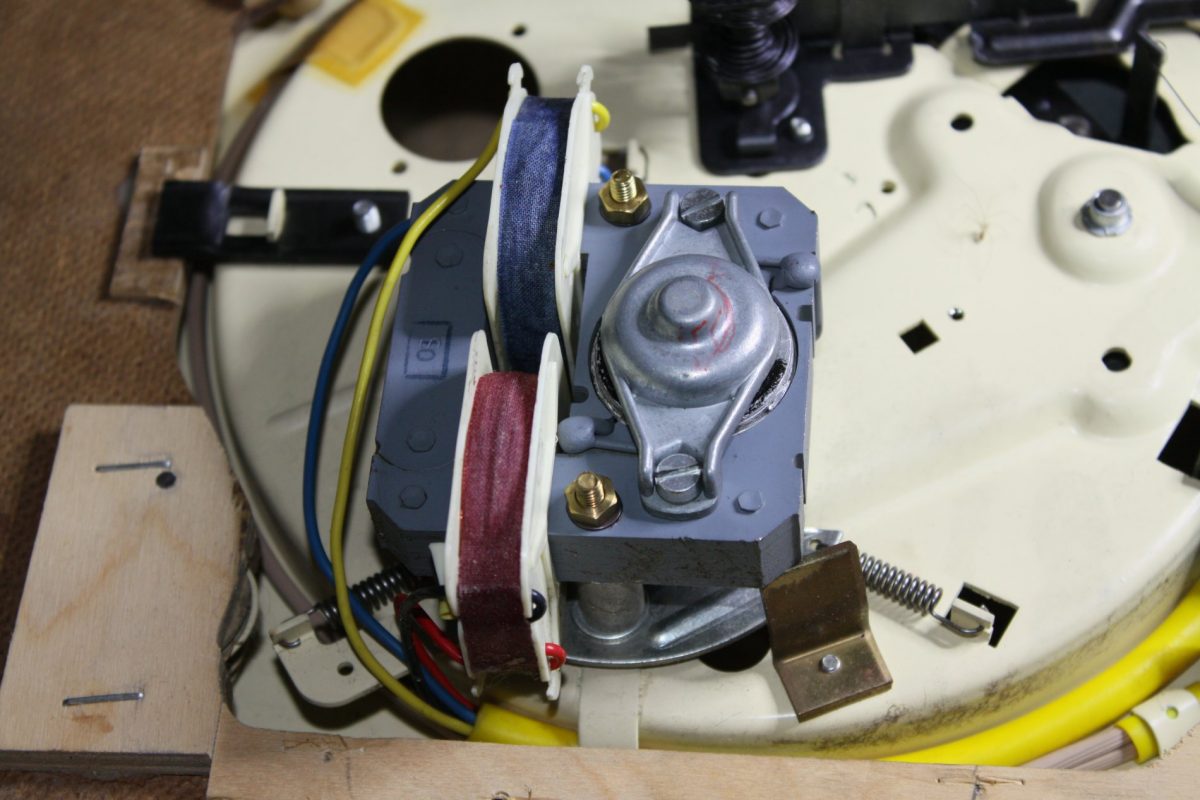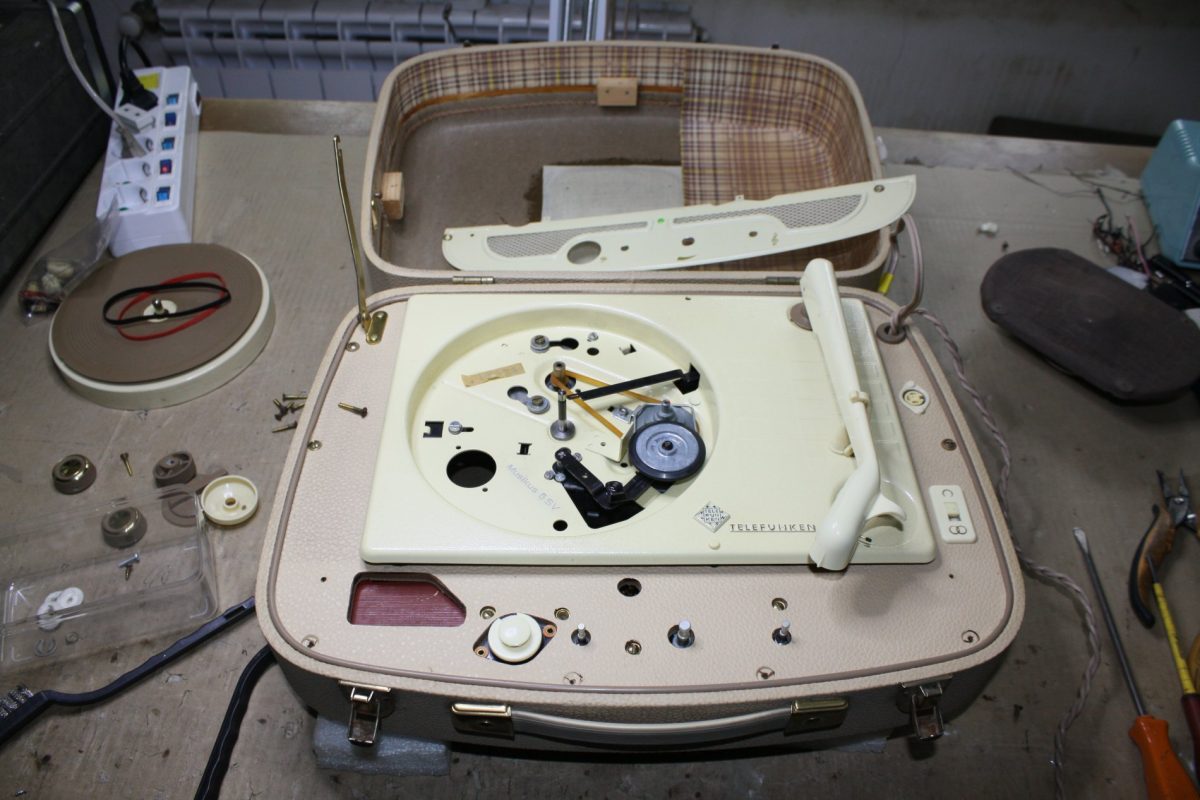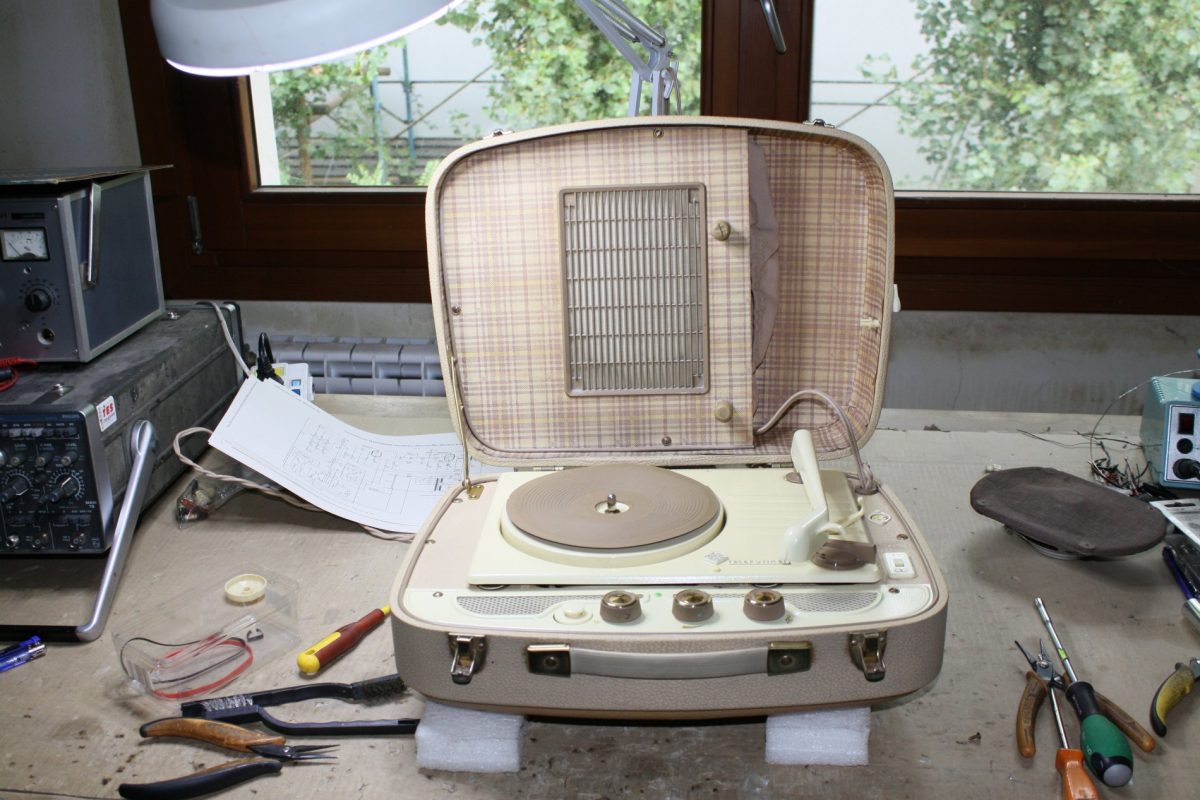 german radios - cn
german radios - cn
Telefunke…
- 13th 10 月 201713th 10 月 2017
- by giovanni
TELEFUNKEN MUSIKUS 5SV
TELEFUNKEN MUSIKUS 5SV
The Telefunken Musikus 5SV is one of the best portable record players built in Germany between 1960-1961.
The mechanical part is comprised of a robust Telefunken belt record player.
The record player is equipped with automatic antiskating set at the factory. It can play discs at 16/33/45/78 rpm.
It is not automatic for which the mechanics are very simple, robust and silent.
It can assemble monophonic or stereo stylus.
The electronics are established from an ECL82 polarized in A-Class.
The triode section of the ECL82 is used as a preamplifier. Between the preamplifier stage and the final stage there are separate tone controls for acute and bass.
Interestingly, the physiological control of the volume consists in three separate levels which intervenes in succession to the volume decreasing.
That physiological control is applied to both potentiometer sections. Another important feature is the ability to connect to an external amplifier, with its loudspeaker, to listen in stereophonic mode.
The traditional use is to connect the output of this record player to the input of a radio.
It is enough to turn the stylus and the Stereo/Mono switch to the Stereo position.
In this way, one channel will be audible from the loudspeaker of the portable record player, the other channel will be audible from the radio’s loudspeaker.
Activating the volume knob of the portable record player, it will act simultaneously on both channels.
The tone controls of the two devices remain separate and independent.
The listening in Mono does not require any additional equipment.
The sound is typical, substantial, sweet and obviously relaxing.
The acute tones are brilliant and the bass is quite quietly present …..within the limits imposed by the laws of physics.
A beautiful portable stereo player with the final stage “Single Ended” in A-Class, enclosed in very refined furniture.
An object which you can enjoy the transmissions of times past.
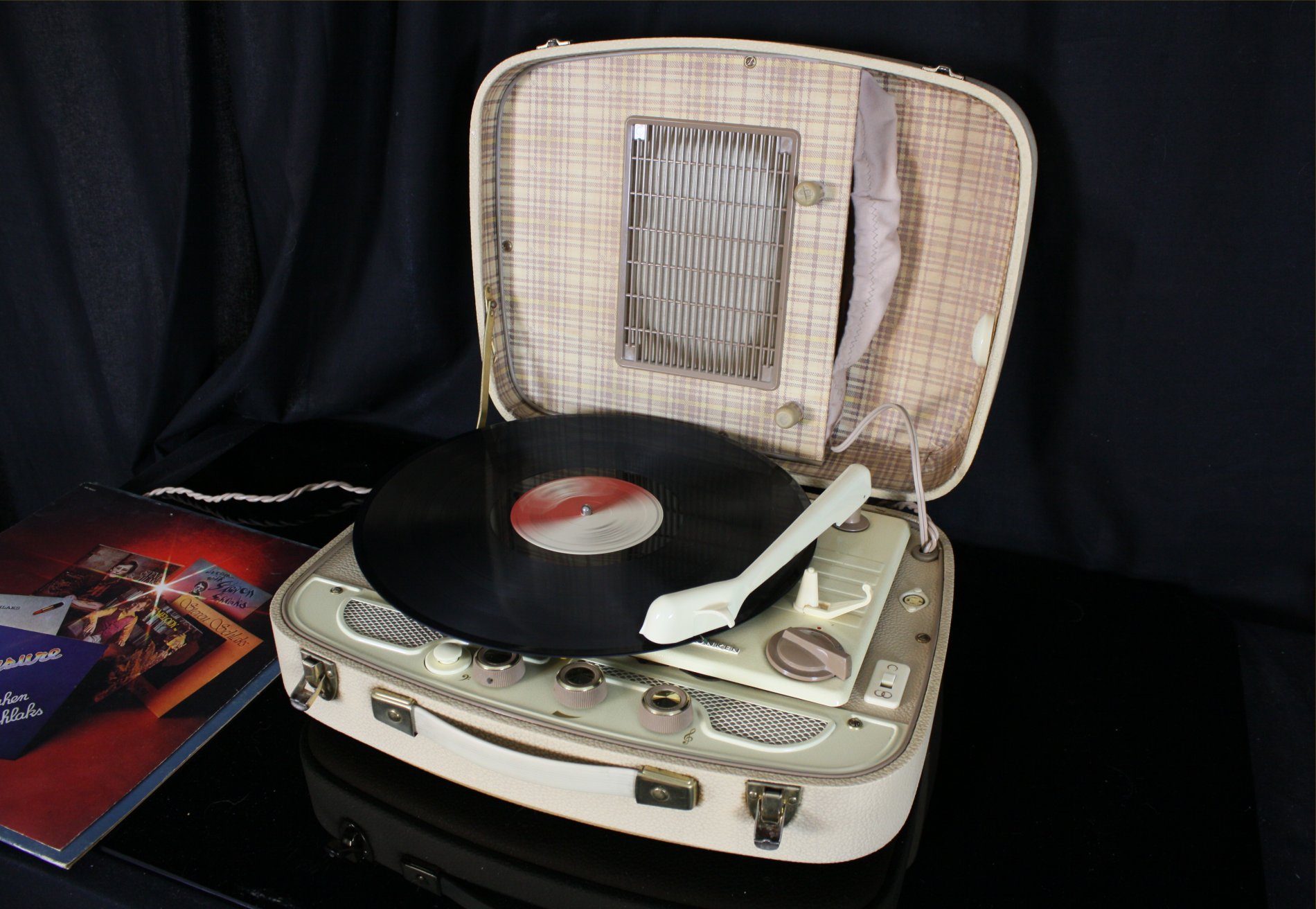



HISTORY
1903 To prevent the English Marconi Company from having a monopoly on wireless transmissions,,Kaiser Wilhelm II orders the company AEG and Siemens to set up a joint venture to develop wireless telegraphy in Germany. It was established under the name of Gesellschaft für drahtlose Telegrafen mbH.
1923 The company name is changed to Firmierung in Telefunken, Gesellschaft für drahtlose Telegrafen mbH. Abbreviated as Telefunken, where Tele means Telegraph and Funken means "Lightning" in the sense of being fast and immediate.
1930 Production gradually moves from military and Government equipment to the production of consumer appliances. During this period, Telefunken enters the market of radio-television, recorders and etching of records.
1930 As radio transmissions are now needed not only to transmit telegraph messages, but also true music and speech broadcasts, it becomes necessary to introduce the concept of sound compression, to avoid continual volume level changes of the radio. Telefunken designs and produces the U3, the first compressor for transmitting stations in the world,. TheU73b, as seen in the picture, represents the evolution of previous models—it allows you to change the compression level, the release times and the attack times.
1941 All Telefunken’s actions are transferred to AEG, which effectively becomes the sole owner of the trademark Telefunken, its factories and patents.
1948 Germany is not invited to the Copenhagen Conference, where the division of Medium and Short Wave radio frequencies of Central Europe is decided. The war has just ended, and officially Germany isn't considered as a technologically important nation. Because of this, Germany decides to develop FM broadcasts even if the quality of the transmissions is considerably higher than those in the AM. At this time, Telefunken develops the V72 microphone/amplification system and its evolutions, intended to be used in all German broadcasters and most European ones too, as well as at the most important recording studios, such as EMI, Decca, Telefunken, etc.
1955 The company becomes Telefunken GmbH.
1967 Telefunken is joined with AEG and the company becomes ‘’AEG-Telefunken’’.
1970 Poor management causes the company to lose market shares. AEG begins to outsource entire business segments and make constant rearrangements.
1985 Daimler-Benz AG buys what remains of AEG-Telefunken.
1996 The name Telefunken is cleared and all activities related to audio products stop.
Today The company name has been renewed in Telefunken Holding AG. Telefunken and its use worldwide are responsible for the name. In United States Telefunken USA buys the rights to build and market worldwide original microphones and some audio equipment under the brand Telefunken Elektroakustik.
The original company that helped spread the music throughout the world doesn’t exist anymore.
MAIN FEATURES
Year of production: 1963
VOLTAGE (AC): 110; 125; 160; 220 Volts
Loudspeaker Larga banda frontside magnet
Dimensions (LHD): 410 x 170 x 310 mm / 16.1 x 6.7 x 12.2 inch
Net weight: 4.5 kg / 9 lb 14.6 oz
1 tube: ECL82
Cartridge T20 - T20/2
Speed 16/33/46/78 rpm
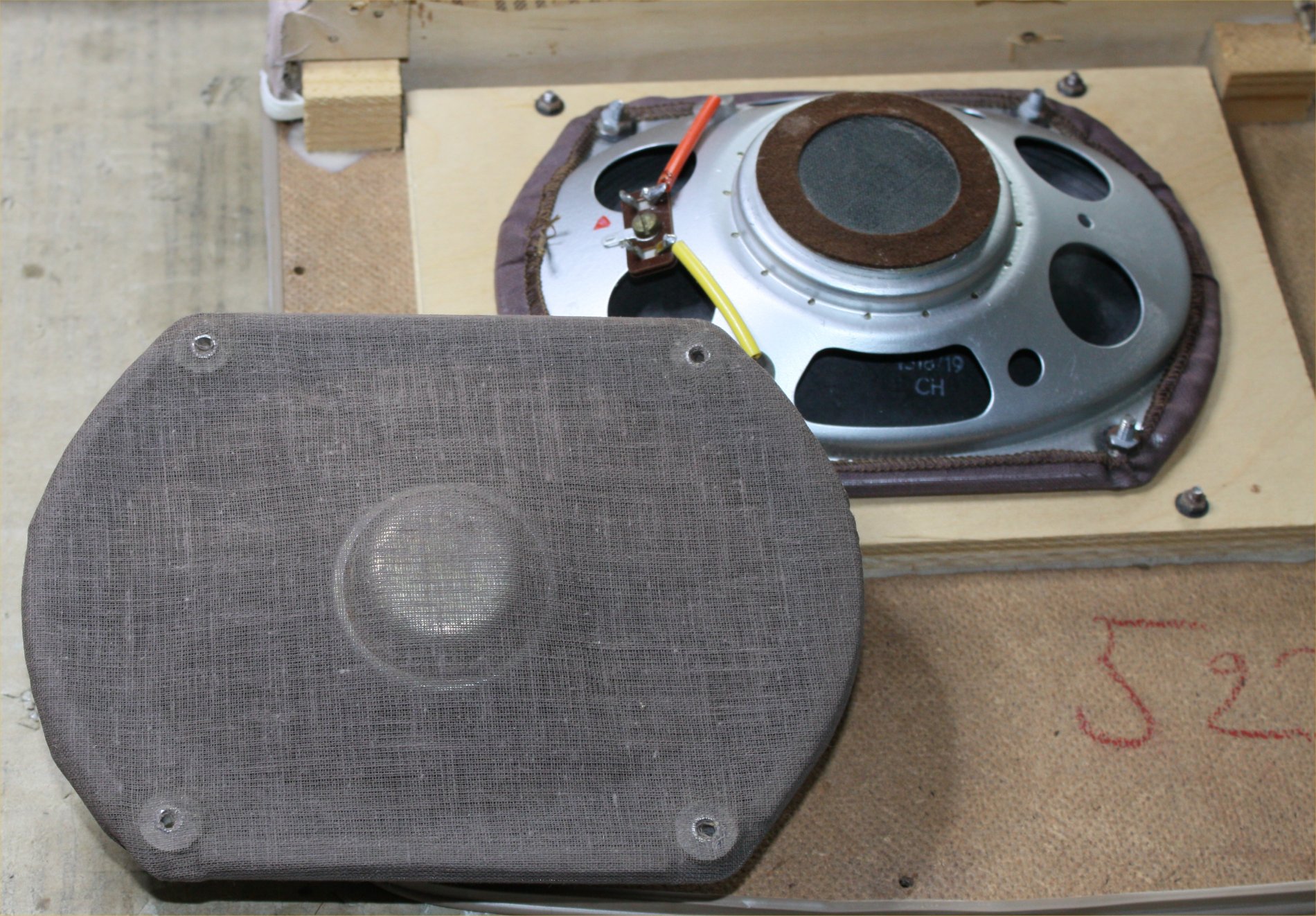
LOUDSPEAKER
The loudspeaker of this device is very interesting.
Since it has been placed on the top of the lid of the cabinet, it has been necessary to contain the depth.
To do this, the magnet and the reel have been moved to the front of the speaker, in front of the cone.
The cone curvature is also minimized.
With these clever solutions the depth has been limited to a few inches.
The frequency response of a loudspeaker with the profile is shifted to the acute, which is really brilliant.
The cabinet built on the lid, allows the low range to be emphasized, so at the end the frequency response is rather linear.
TONE CONTROLS
Another important feature, that reveals the class of this device, is the tone control circuit, which consists of two separate sections for high and low frequencies.
Somewhat different to the circuits usually used in German production, here the controls are independent from the volume control position.
These controls act naturally only on the internal amplifier, not on that additional amplifier.


SOCKET FOR EXTERNAL AMPLIFIER
In the photo, on the left you can see the 3 poles DIN socket, to which it is possible to connect an additional amplifier, as specified in the presentation of the device.
When the switch is in the Mono position (a circle) on both amplifiers the internal one and the additional one, the same signal arrives.
When the switch is in the Stereo position (two circles) to the two amplifiers the signal arrives separately in the two channels. This is controlled by the volume potentiometer which consists of two equal sections.
MAIN CONTROLS

The first command you can see to the left is the voltage changer. It should only be used at the beginning to adjust the voltage of the record players’ operation to that of the network.
Then, it must no longer be touched.
The second command is the control of low tones of the internal amplifier, to follow the potentiometer of the volume (of both channels)(di entrambi i canali)
and finally, the acute tones control knob.
Above you can see the big knob of the speed control of the record player.
At the end, the Mono/Stereo switch and the output for an additional amplifier.
RESTORING WORKS
LISTEN WITH MUSIKUS THIS RACHMANINOW MASTERPIECE IS A REAL JUMP IN THE PAST
